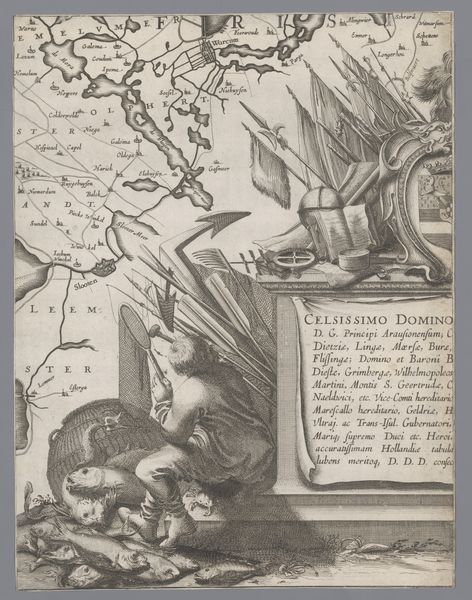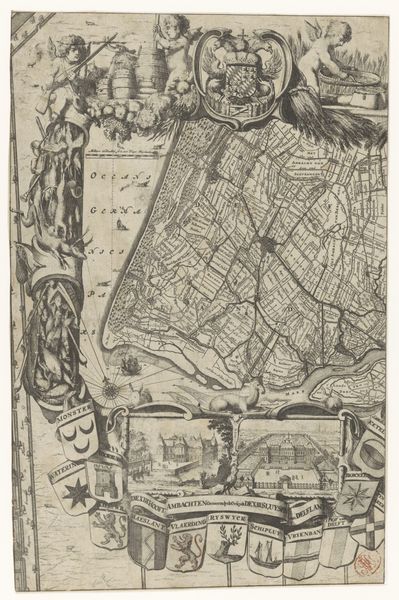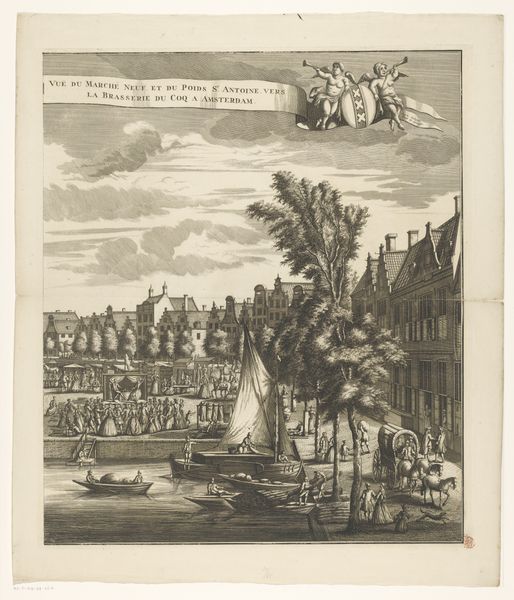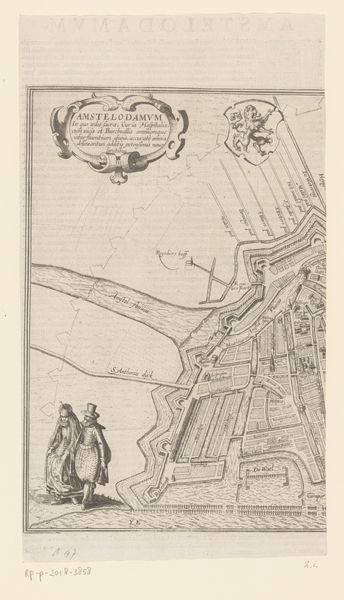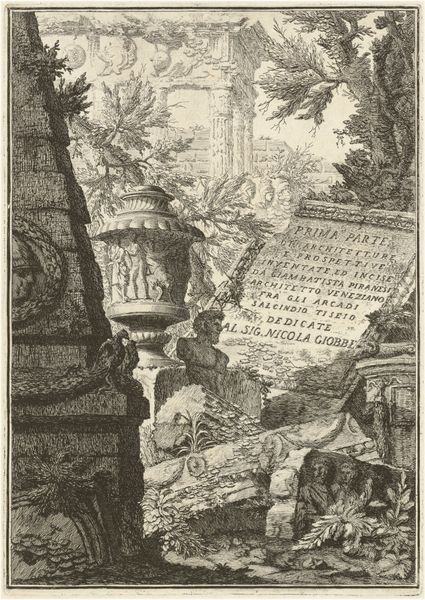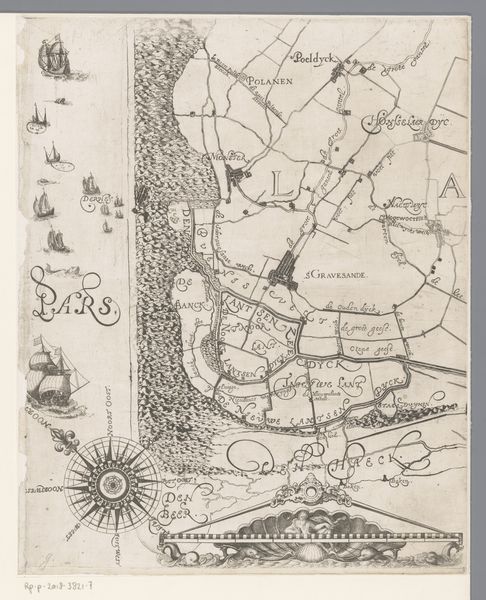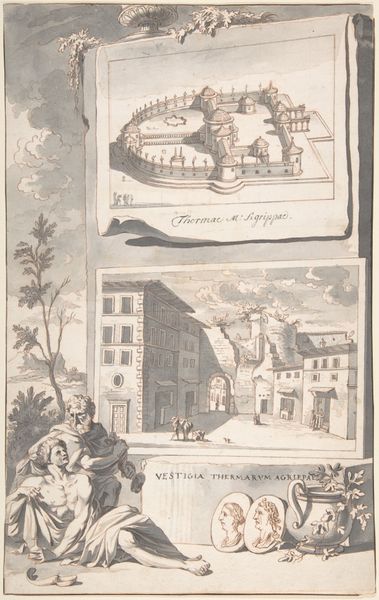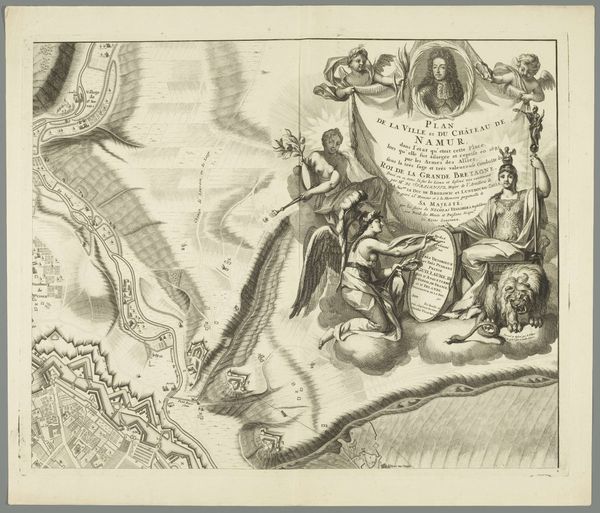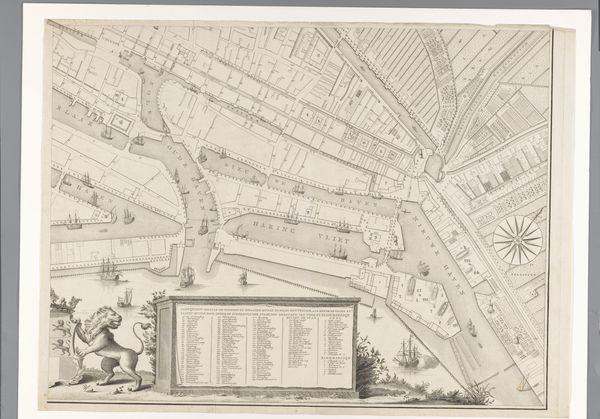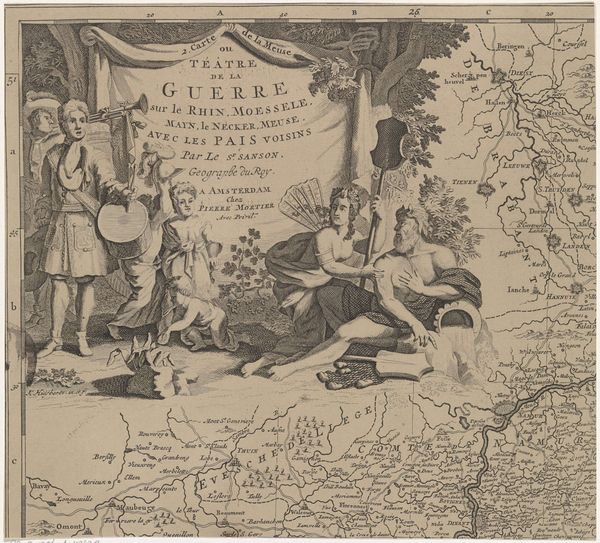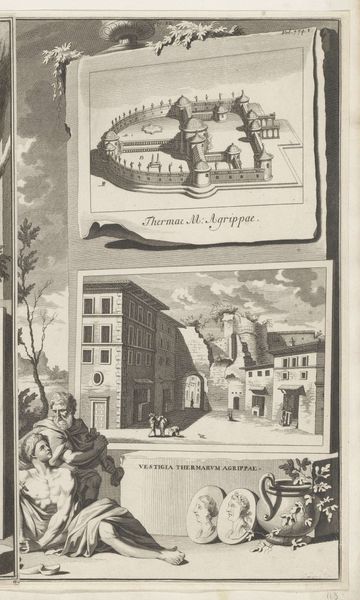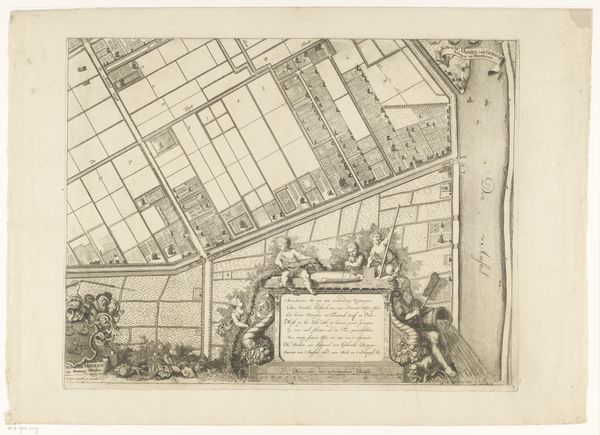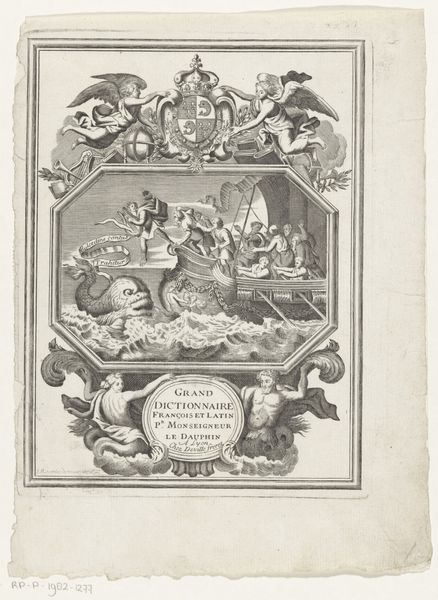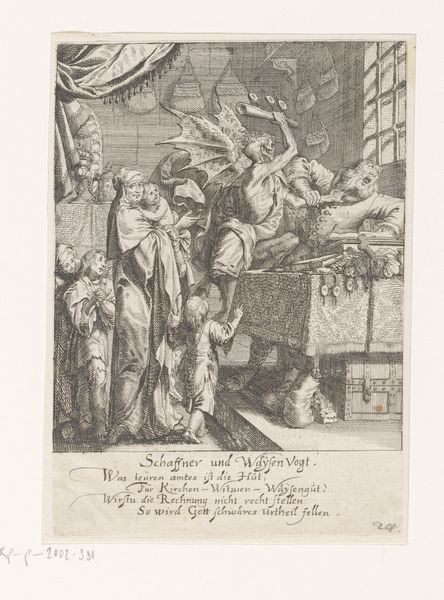
graphic-art, print, engraving
#
graphic-art
#
baroque
# print
#
landscape
#
engraving
Dimensions: height 405 mm, width 309 mm
Copyright: Rijks Museum: Open Domain
Curator: Okay, here we have Jacob Aertsz. Colom's "Kaart van het Graafschap Holland en Utrecht," dating back to 1639. Editor: This piece is amazing. I never thought maps could feel… jolly. It is so elaborately ornamented. The figure with the jug is funny and bizarre and catches the eye more than the geography does. It looks like organized chaos. What are your initial thoughts about this work? Curator: "Organized chaos"—I adore that! For me, this engraving dances between precision and imagination, it transcends mere cartography, don't you think? Notice how the formal map is almost battling for space with these bursting vignettes of everyday life, it's the booming Baroque embracing the burgeoning mercantile spirit of the Dutch Golden Age. Editor: It's a little overwhelming, to be honest. Where should my eye even land? I get that it's detailed, but what does it all *mean*? Curator: Good question! The overflowing abundance, it speaks volumes. Think about the power the map gives – of owning the land, viewing it, and claiming it. The Dutch were quite literally re-shaping the world and projecting authority in an artistic format with symbols of peace, nature and even leisure.. How interesting that it has survived so well into the present! The hat, instruments and the drink: Are we celebrating the land, or consuming it? Editor: Wow, I hadn't thought of it that way. It really turns the map into more than just a guide. Now the map *is* the message of Dutch ingenuity, control and…appetite. I'll never look at a map the same way again. Curator: Wonderful! And isn't it exhilarating when a static image begins to narrate stories beyond its lines and forms? Editor: Absolutely! This piece felt a bit overwhelming initially but contextualizing the art elements opens a broader insight into art and history!
Comments
No comments
Be the first to comment and join the conversation on the ultimate creative platform.
